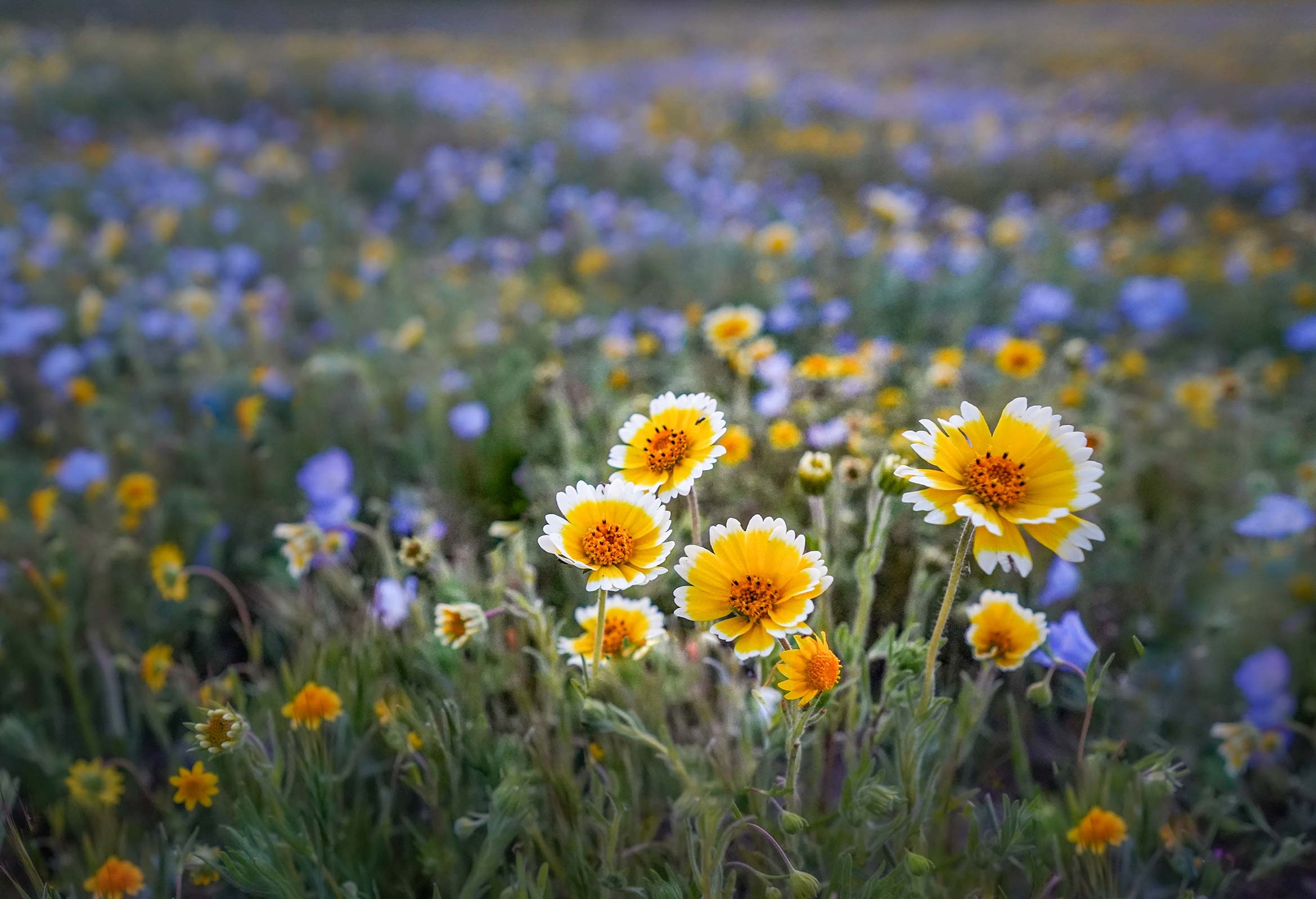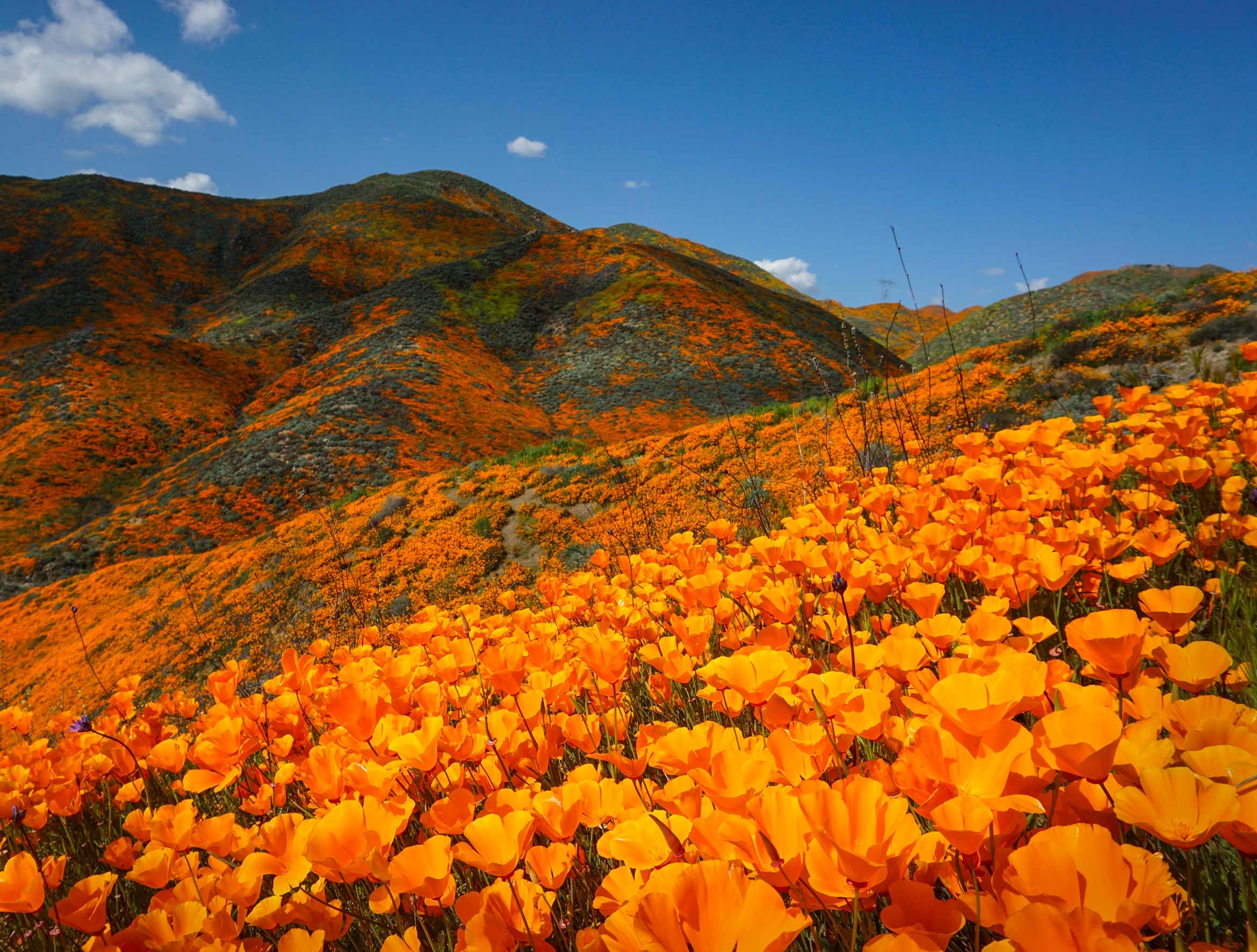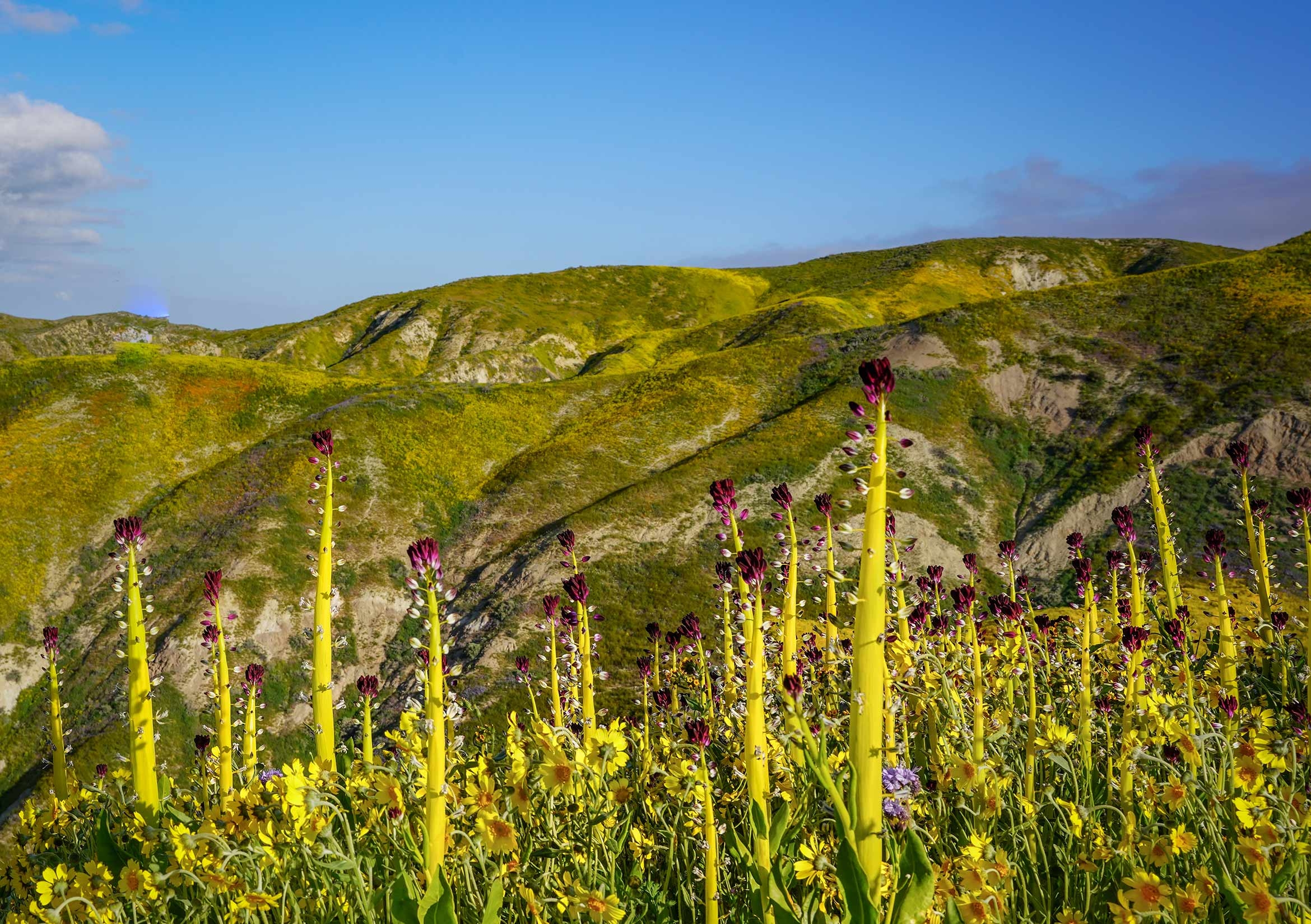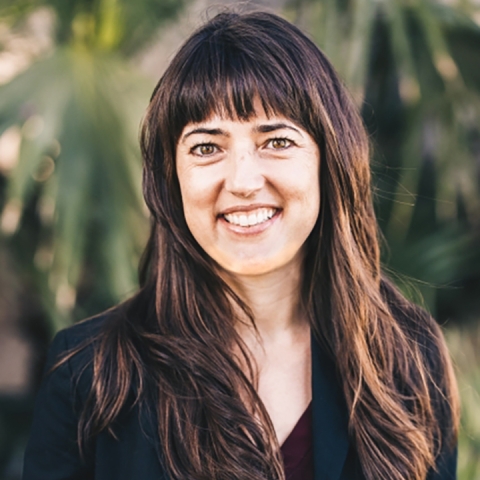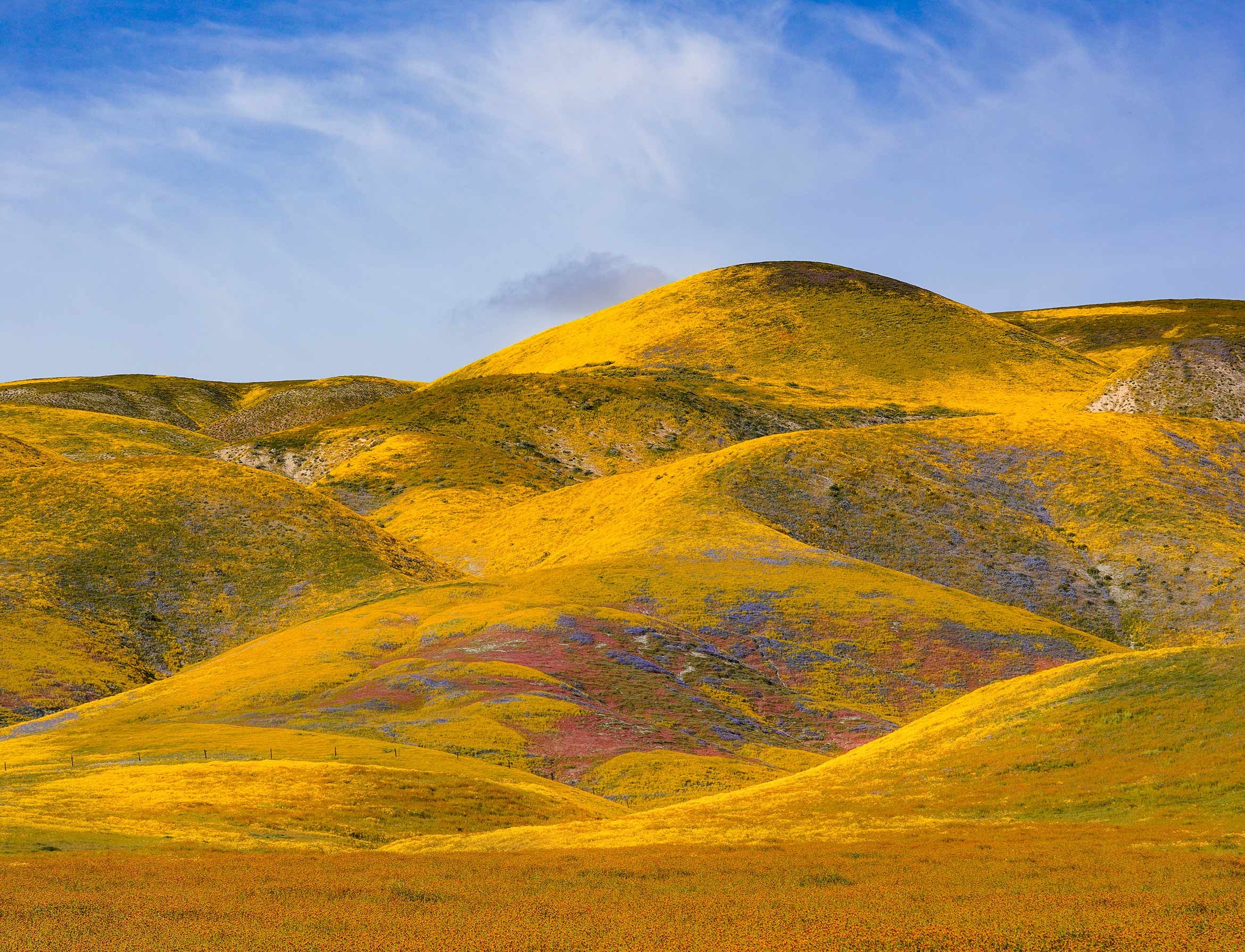
California is awash in color, and folks are flocking to see the native flowers spreading across our diverse open spaces. But many people mean many feet, which could have lasting impacts on the landscapes and the superblooms of the future.
“Superblooms are difficult to manage because they don’t occur every year,” said Joan Dudney, an assistant professor at UC Santa Barbara’s Environmental Studies Program and Bren School of Environmental Science & Management. Superblooms tend to occur when conditions are wet following one or more dry years that have suppressed invasive grasses. As a result, public use is hard to predict and can easily overwhelm the limited resources of management agencies. Case in point: At Walker Canyon Ecological Reserve in Riverside County, there were so many visitors during the last superbloom that the state decided to temporarily close it this spring.
In remote places, hiking off trails isn’t going to destroy the wildflowers forever since seeds can lie dormant in the soil for many years. “However, in highly visited locations, so many people walk off trail that within a few weeks, only a few patches of wildflowers remain,” said ecologist Loralee Larios, an assistant professor at UC Riverside. With heavily compacted soils and fewer flowers to produce seed, these places will likely degrade. That means fewer flowers will return during the next potential superbloom.
In order to continue enjoying superblooms in the future, the researchers said, we need to encourage behaviors and develop management approaches that reduce the likelihood of park closures and increase the likelihood of more flowers. Strategies that reduce human impacts, particularly in high use areas, are critical. “These strategies may include limiting visitors, creating a paid reservation system, or providing more seasonal staff to run interpretive programs,” said Dudney. It could also involve developing a rotation of fields where photographers can wander freely during each superbloom. Dudney noted that this will require time, financial resources and careful strategy, but will be necessary to sustain superblooms in highly trafficked areas.
Dudney, Larios and UCSB Professor Carla D’Antonio have a few tips for those venturing into the flowers this year. These small actions add up, minimizing our impact on the landscape and allowing more visitors to enjoy these beautiful spaces for many years to come:
- Stay on designated trails. If there isn’t one, then follow in others’ footsteps.
- Avoid picking wildflowers. If one person starts, more will follow.
- Pack-out trash.
- Park in designated areas. Follow signage and restrictions. There are endangered species in some of these places.
Learning how to identify the flowers can promote a deeper connection to these spectacular landscapes. Dudney and Larios recommend downloading the apps Seek and iNaturalist, which can help even the most casual visitor with on-the-spot identification.
Those interested in direct action, they added, can plant native wildflowers on their own property, volunteer with local non-profits restoring native species or consider supporting the parks, agencies and organizations who have cared for these places for decades.
Ultimately, said Dudney, enjoyment looks different for different people. For some it’s capturing the perfect family photo. For others, it’s contrasting white, billowing dresses against the dense, orange poppies. For researchers and conservationists, it’s appreciating these places from designated trails.
“We wouldn’t be awash in wildflowers this spring if it weren’t for conservationists who pushed to protect these open spaces,” Dudney said. “But to enjoy them for years to come, we need to develop more sustainable approaches that enable different kinds of wildflower enthusiasts to wander in awe at the intensity and diversity of flowers on display.”
Harrison Tasoff
Science Writer
(805) 893-7220
harrisontasoff@ucsb.edu
